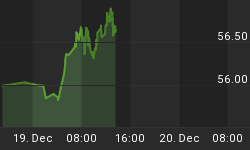While many of the best and brightest college students are preparing for the final exams, investors may take themselves back a few years to happily re-live those days. Oh, exam season... remember mid terms?
Investors are about to have a mid term and it might be wise to review your play book -- history, mathematics and science chapters in particular.
This year, of course, witnesses the Mid Term Election Cycle. Here is the history: the market tends to make a significant bottom every four years. The late-2002 bottom, in hindsight, has come to be widely recognized as the post 9/11 bottom; down 33% from its January 2000 high at that time, the market has recovered 56% since then.
Four years earlier we lived through the short, brutal "Asian Flu" and Russian bond default and their stock market impact in 1998. That year, the market fell 10% in just 45 late Summer days, but the average stock was down far more than that and investors struggled.
Now the math: the New York Stock Exchange Bullish Percentage (BPNYSE) is a risk assessment tool I have often referred to in the past. In use since 1940, it has an extraordinary track record on quantifying the overall risk/reward status of the broad stock market. In short, it tells us that when 70% or more of the exchange stocks are in bullish trends, risk is high as most investors are already fully invested. Conversely, when the same gauge shows that 30% or fewer stocks are on in positive trends, most investors have already run to the sidelines and the risk/reward ratio is tilted heavily in your favor.

The chart above goes back far enough to show the last mid-term pullback. Just as in 1998, you can see the BPNYSE moved below 30% in 2002 and both were followed up by vigorous rebounds. In fact, this indicator visits the green zone roughly once every 3 years; since we haven't been down below the 30% level since 2002, statistically we're overdue. In fact, since 1955 the green zone has been seen just 19 times. Over that same time there have been 12 mid-term elections and in those years we have seen significant market lows and buying opportunities on 10 occasions, or 80% of the time.
On to science, the worst subject for many students. Yale Hirsch and his son have long written on the market's seasonality: sell in May and go away, right? From his work, the seasonally unfavorable period is May to October, the growing season. Further, it turns out that historically May is one of the worst individual months for stocks corresponding to the end of the stock "growing season".
So, the final test question: how is the trivia above likely to impact investors over the middle of 2006?
Here's my assessment: though earnings may continue to impress and the market may be able to rally a bit more from here, a somewhat overbought market will likely witness summer profit taking and repositioning, outcomes for which it is both positioned and overdue, especially in the basic materials and commodities sectors.
Investors would be wise to consider pairing back gains in general as more challenging stock market season starts. Perhaps if the Fed does stop raising rates, which everyone has been "looking forward" to, the surprising effect might be not that of a joyous rally, but of increased fears of looming recession. The summer might then drag on until we get back to a more favorable season late in the year, one that would hopefully bring about yet another meaningful market low and buying opportunity. The problem is, getting there could be a bit unpleasant. Investors shouldn't panic, but it wouldn't be a bad idea to take a little money off the table at this time.
**Many investors who are wary of U.S. markets are looking abroad for opportunities. For an exclusive, in-depth report on the most important Asian economies, be sure to download our exclusive, free report on China, India and Japan here: http://www.deltaga.com/reportForm.asp?rep=3.















